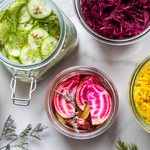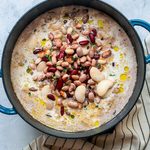Diet books, reviewed: The G.I. Diet Clinic
We asked the experts to evaluate’and enhance’four popular diets. Here’s our assessment of diet book The G.I. Diet Clinic
Source: Best Health Magazine, September 2008
 The G.I. Diet Clinic
The G.I. Diet Clinic
By Rick Gallop, past president of the Heart and Stroke Foundation of Ontario
Basic premise
Your body processes different carbohydrates at different speeds. The glycemic index (GI), developed by Dr. David Jenkins, a professor of nutrition at the University of Toronto, measures that speed. The G.I. Diet proposes that choosing low GI foods, such as whole grains, berries and lean meats such as pork that break down at a slow and steady rate, will keep you feeling full and satisfied throughout the day.
What’s different
The concepts from his original 2002 book remain the same, but in this edition Gallop has added an online component. Through his website, Gallop invited 40 clinically obese people to participate in an ‘e-clinic.’ They got weekly coaching emails about the basics of the G.I. Diet. In return, they sent him real-life feedback, which is excerpted in the book, about the program and their progress. (The clinic is available at gidietclinic.com for $25.)
The pros
- ‘The GI concept is recognized by health professionals,’ says Geneviève O’Gleman, a registered dietitian in Quebec. Not all carbs are equal. For instance, pick whole foods like brown rice and whole-wheat bread, rather than processed versions.
- The manageable 13-week plan, the idea of setting mini-goals, and rewarding yourself with non-food treats such as a movie or a massage all make the plan more achievable.
The cons
- Foods are divided into red (avoid), yellow (eat occasionally) and green (enjoy frequently) categories based on their GI, but finding meals that don’t combine red, yellow and green foods can be hard.
- ‘Forbidding foods isn’t a good idea,’ says O’Gleman. ‘You shouldn’t have to avoid eggs, 2% milk, dried fruit and watermelon all your life as the plan suggests. And people are not going to give up sugar and caffeine forever.’
Latest findings
An 18-month study published in the Journal of the American Medical Association showed that a low-glycemic load diet (not Gallop’s specifically) improved triglyceride and healthy HDL cholesterol concentrations. As well, Australian researchers surveyed six studies and found that people on a low-GI diet significantly increased body fat loss and improved lipid profiles when compared to low-fat diets.
Healthy boosts
- Some of the foods on the G.I. Diet’s red list can be part of a healthy diet. For example, eggs are fine. Just poach, or fry them in a non-stick pan instead of with butter. Peanut butter on its own has a high GI (‘red’) rating, so enjoy it with whole-grain bread or crackers. ‘Many ‘red’ foods can be eaten if they’re mixed with ‘green’ foods,’ says O’Gleman. In fact, peanut butter contains monounsaturated fatty acids, which have been linked to weight loss.
- Add some variety so you don’t get bored and fall off the wagon: There’s a lot of repetition in the 13 weeks of menus.
Read our reviews of other popular diet books: The South Beach Diet Supercharged, The Best Life Diet and The All-New Atkins Advantage.
Don’t miss out! Sign up for our free weekly newsletters and get nutritious recipes, healthy weight-loss tips, easy ways to stay in shape and all the health news you need, delivered straight to your inbox.




